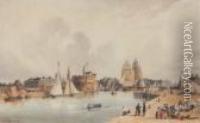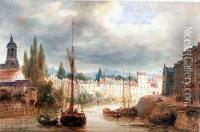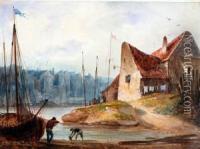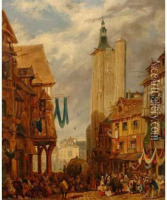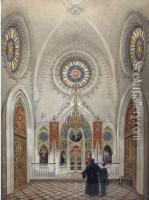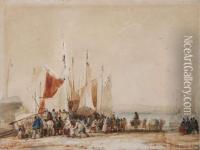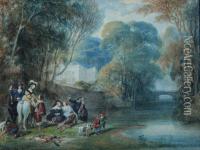Hippolyte Garneray Paintings
Hippolyte Jean-Baptiste Garneray was born on February 25, 1787, in Paris, France, into an artistic family. His father, Jean-François Garneray (1755–1837), was a painter and engraver, setting the stage for Hippolyte and his siblings' future careers in the arts. Garneray's early life was marked by the tumultuous events of the French Revolution and the Napoleonic Wars, which greatly influenced his future works.
Garneray embarked on a seafaring career at a young age, joining the French Navy in 1802. His experiences at sea, including being captured and held as a prisoner of war by the British for several years, profoundly influenced his artistic direction. These experiences provided him with a wealth of maritime subjects that he later incorporated into his paintings.
After his release from captivity in 1814, Garneray returned to France and devoted himself to painting. He became renowned for his maritime and naval scenes, capturing the dynamic and tumultuous nature of sea battles and the serene beauty of ships at sea. His works are characterized by their meticulous detail, vibrant colors, and dynamic compositions, reflecting his firsthand naval experiences.
Garneray's talents were recognized by the French government, and he was appointed as the official painter of the French Navy. This prestigious position allowed him to continue his work documenting France's maritime history and achievements. Throughout his career, he also engaged in engraving and creating panoramic paintings, further showcasing his versatility as an artist.
In addition to his naval and maritime paintings, Garneray also explored historical and mythological themes, although these works are less well-known today. His artistic legacy is preserved in various museums and collections worldwide, including the Musée National de la Marine in Paris.
Hippolyte Garneray passed away on September 11, 1858, in Paris. His legacy lives on through his contributions to maritime art, making him one of the most significant French marine painters of the 19th century. His works continue to be celebrated for their historical accuracy, technical skill, and artistic beauty, capturing the essence of the sea and its vessels in a manner few others have achieved.
